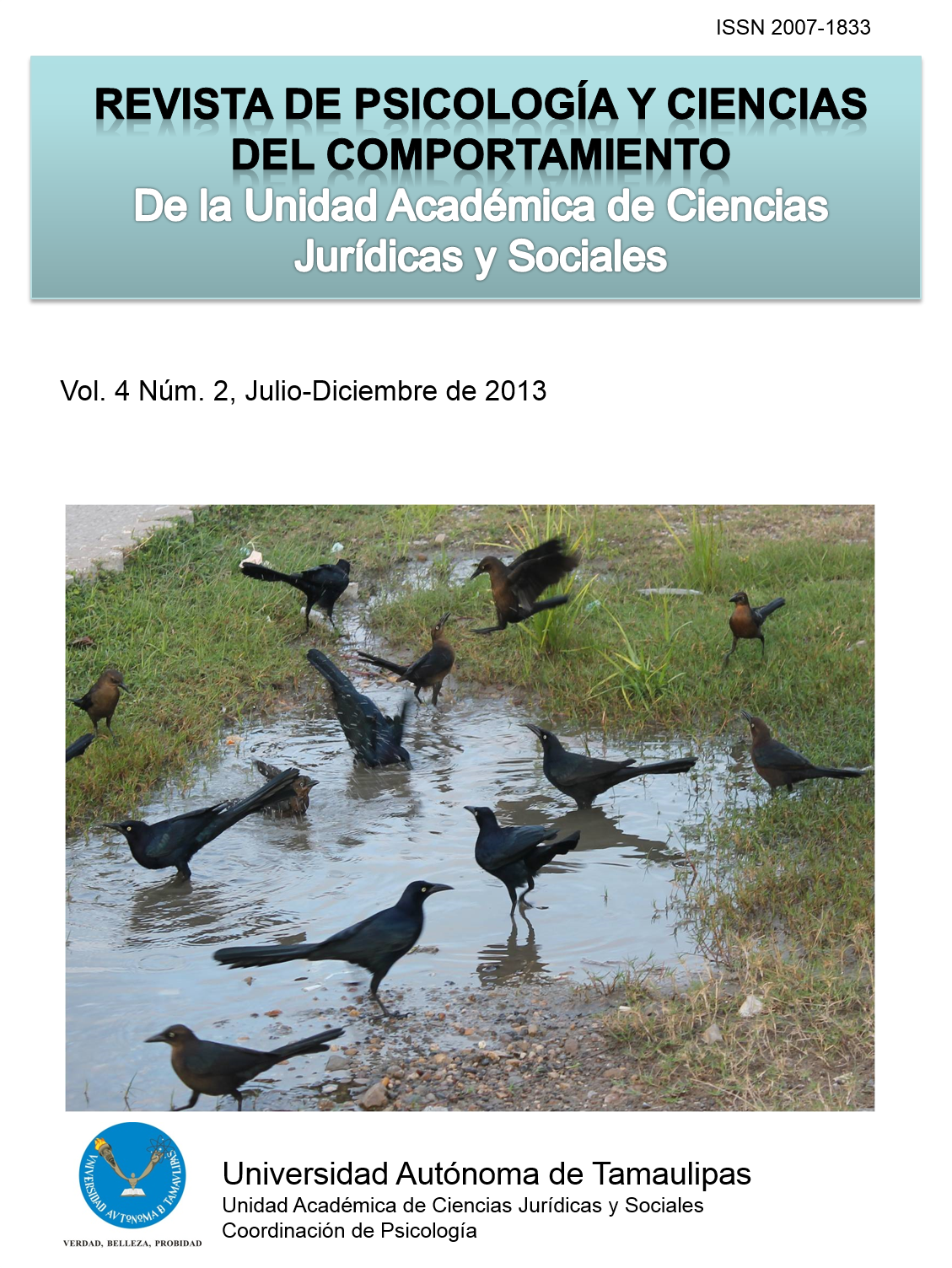Developing a risk perception scale at driving in residents of Tampico-Cd. Madero, Tamaulipas
Keywords:
Measurement, Risk Perception, Motorists, traffic behavior, southern TamaulipasAbstract
The overall objective of this study was to build a Likert valid and reliable for assessing risk perception when driving in urban context in a sample of residents vehicles drivers Tampico and Ciudad Madero, Tamaulipas type instrument. The perception of risk when driving is based on the following propositional or cognitive motivational models: Model Risk-Zero and Summala Näätänen (1976) Threat-Avoidance Model of Fuller (1984), homeostatic model Theory of Risk (THR) Wilde (1982) and Hierarchical Model and Van der Molen Bötticher (1985 Montoro, 2004). A transverse or trans non-experimental design was used. In a first phase a provisional instrument relating to cognitive, motivational and attitudinal at risk when driving, which was applied to 41 subjects was drawn aspects incomplete sentences results were obtained by frequency analysis to determine the adjectives that were part of the items for a Likert scale of 200 items, which was tested in 40 subjects. Through a process of discrimination validity of an instrument with reagent 30 items, with a degree of reliability .785 using Cronbach's alpha coefficient was obtained. Finally, a principal components factor analysis with Varimax rotation was performed, yielding four factors that explained a whole 54.4% of the variance.References
Caparrós E. A. (1999) El comportamiento humano en conducción: factores perceptivos, cognitivos y de respuesta. Universidad de Murcia. Recuperado de http://www.um.es/docencia/agustinr/pca/textos/cogniconduc.pdf
Carbonell y Montoro (1995) La psicología y la seguridad vial en España INTRAS, Instituto Universitario de Tráfico y seguridad Vial. Universidad de Valencia. Recuperado de http://www.papelesdelpsicologo.es/vernumero.asp?id=676
Gómez C. (2011, 12, mayo) México, séptimo lugar mundial en muertes por accidentes de tránsito, informa la Ssa, La Jornada, p. 42 http://www.jornada.unam.mx/2011/05/12/sociedad/042n1soc, http://es.scribd.com/doc/74619960/ACCIDENTES-AUTOMOVILISTICOS
Ledesma, R., Poó, F., & Peltzer, R. (2007) Búsqueda impulsiva de sensaciones y comportamiento de riesgo en la conducción. Avaliação Psicológica, 6(2), pp. 117-125. Recuperado de http://pepsic.bvsalud.org/scielo.php?pid=S1677-04712007000200002&script=sci_arttext
Montoro, L., Alonso, F., Esteban, C. y Toledo, F. (2000). Manual de seguridad vial: el factor humano. Barcelona: Ariel-INTRAS. Recuperado de http://redalyc.uaemex.mx/pdf/167/16713079016.pdf
Näätänen, R. y Summala, H. (1976): Road user behaviour and traffic accidents. Amsterdam: North Holland Publishing Comp.
Nadelsticher, A. (1983) Técnicas para la Construcción de Cuestionarios de Invierno 2013-3 Actitudes y Opción Múltiple, México: INACIPE.
Downloads
Published
Issue
Section
License
Those authors who have publications with the Journal of Psychology and Behavioral Sciences of the Academic Unit of Legal and Social Sciences, accept the following terms:
a. The authors will retain their copyright and guarantee the journal the right to first publish their work, which will be simultaneously subject to the Creative Commons Attribution-NonCommercial-Share Alike 4.0 International License. which allows third parties to share the work as long as its author and his first publication are indicated this journal.
b. Authors may adopt other non-exclusive license agreements for the distribution of the version of the published work (e.g., deposit it in an institutional telematic archive or publish it in a monographic volume) provided that the initial publication in this journal is indicated.
C. Authors are allowed and recommended to disseminate their work through personal communication (e.g. colleagues) before and during the submission process, for purposes of feedback or enrichment of the work, which can produce interesting exchanges








